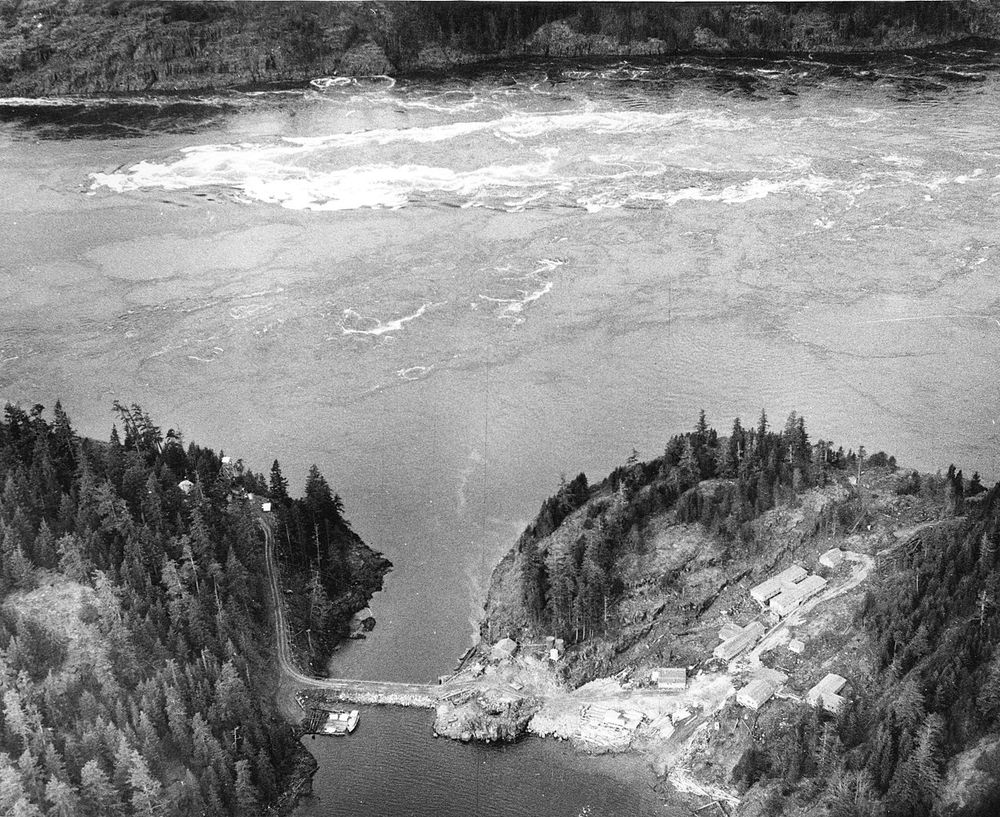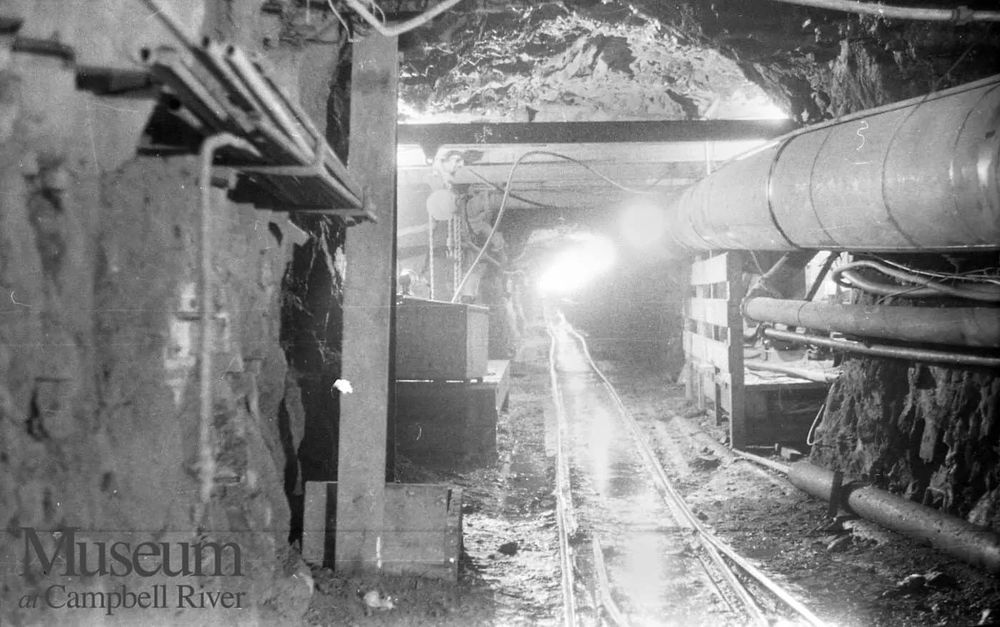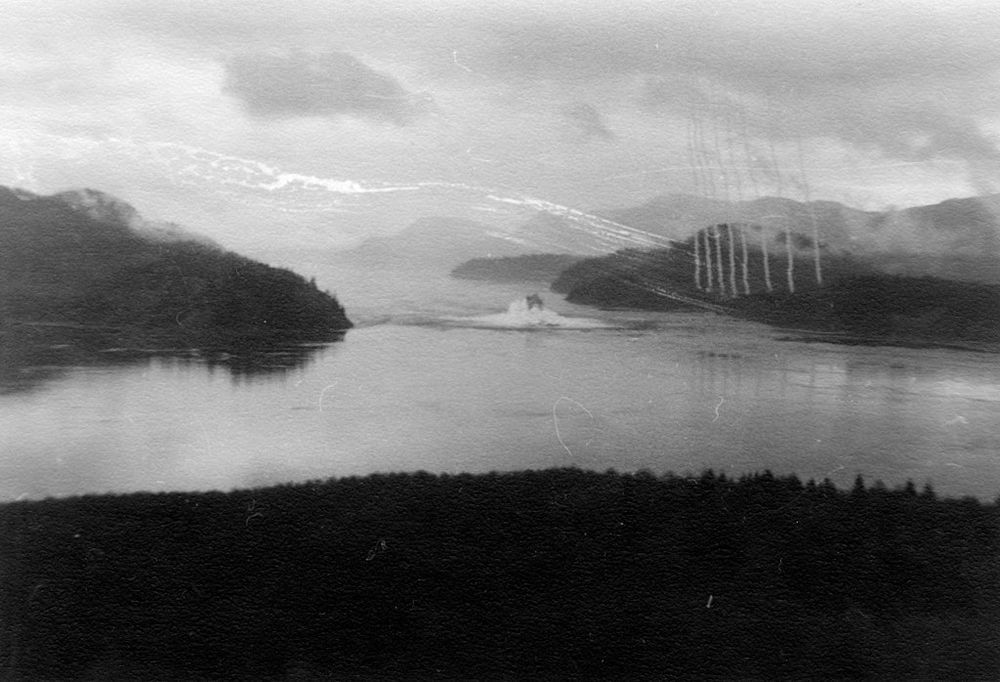The Seymour Narrows, however, has its own hazards.
It is very narrow and is known for strong tidal currents.
Before 1958, it claimed more than a hundred ships, big and small, and as many lives.

The Seymour Narrows before the Ripple Rock was blasted.
Notice the violent turbulent eddies that formed in its wake during low tide.
Photo:Wikimedia
The following year, engineers began drilling holes into the top of the rock.

A second attempt was made in 1945.
Schematic drawing showing the mining of Ripple Rock.
The tunnels underneath Seymour Narrows.

The blast also created considerable scientific interest in the field of seismology.
The explosion went off at 9:31:02 AM on 5 April 1958.
The spectacle was watched on live TV across the nation.

Before the blast occurred, everyone was very concerned about what damage this blast was going to cause.
An area of radius 5 kilometers from the explosion was cleared off people.
Fortunately, the water dampened the explosion and the sound.

The blast breaches the water’s surface immediately following detonation.
Debris are ejected as a cloud of dust expands across Seymour Narrows.
The Seymour Narrows is no longer as dangerous as it was more than sixty years ago.

References:#Museum at Campbell River# 60 years later, a major underwater explosion in B.C.
still fascinates,CBC News# J.l.A.
Rutley, The Demolition of Ripple Rock